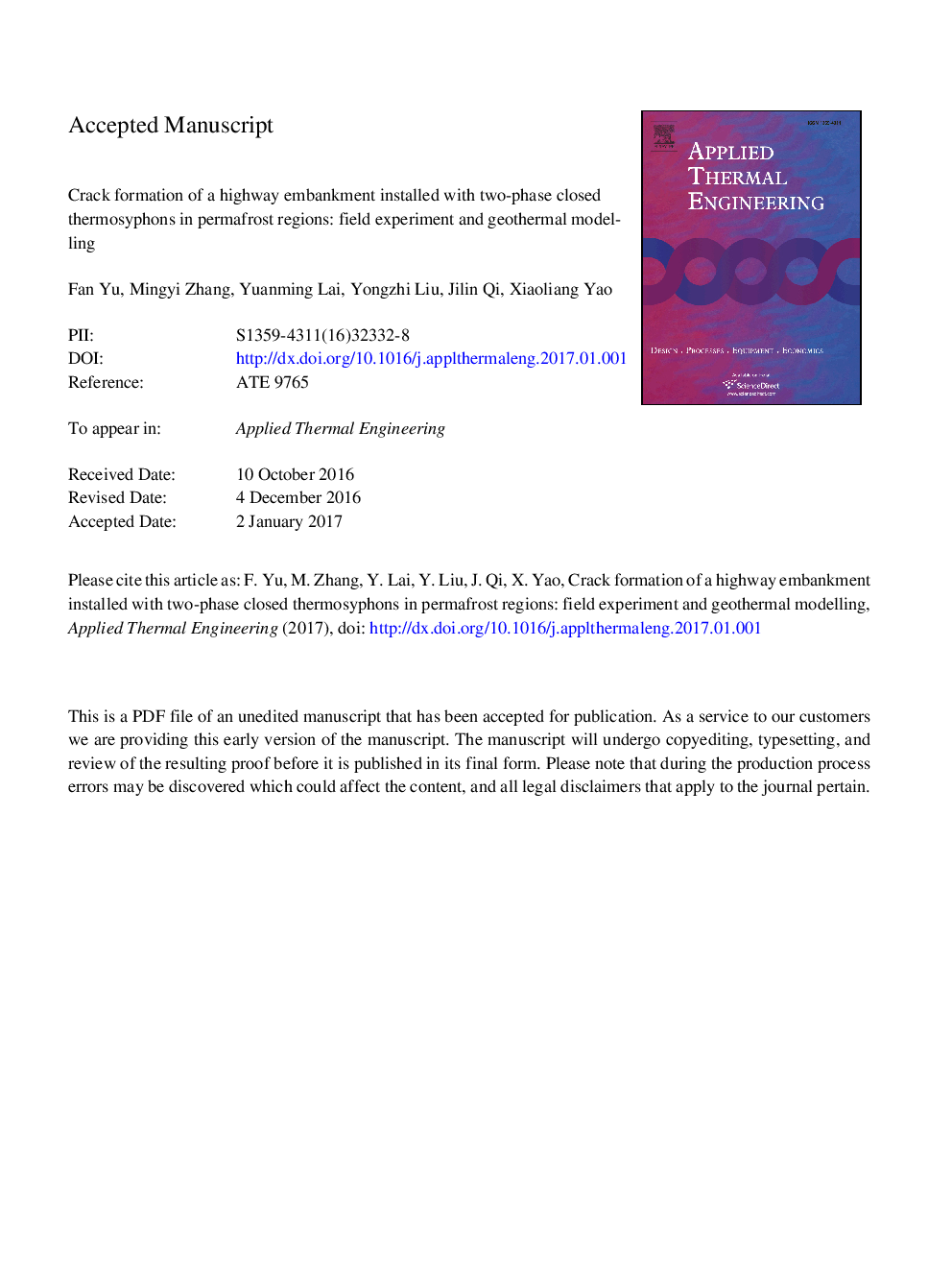| Article ID | Journal | Published Year | Pages | File Type |
|---|---|---|---|---|
| 4991636 | Applied Thermal Engineering | 2017 | 41 Pages |
Abstract
Two-phase closed thermosyphon (TPCT) is proved to be an effective countermeasure to thaw-induced problems for engineering constructions in permafrost regions. However, cracks often occur on the road surfaces of the embankments installed with TPCTs, which are supposed to be closely associated with the unstable thermal states of the underlying soil layers. The crack is a potential danger to the embankment stability, and thus a better understanding of the crack formation is urgently needed. In this paper, in order to address the problem, 5-year ground temperatures and embankment deformations at different soil layers were monitored at a road section with TPCTs and its neighboring road section without TPCTs. The ground temperatures were mainly employed to verify an air-TPCT-soil coupled model, and then the model was used to reproduce the spatial-temporal geothermal profiles of the two road sections. In combination with the geothermal profiles and the monitored deformations, the causes and the occurrence time of the cracks are discussed. Corresponding suggestions are proposed to allay the problem.
Keywords
Related Topics
Physical Sciences and Engineering
Chemical Engineering
Fluid Flow and Transfer Processes
Authors
Fan Yu, Mingyi Zhang, Yuanming Lai, Yongzhi Liu, Jilin Qi, Xiaoliang Yao,
